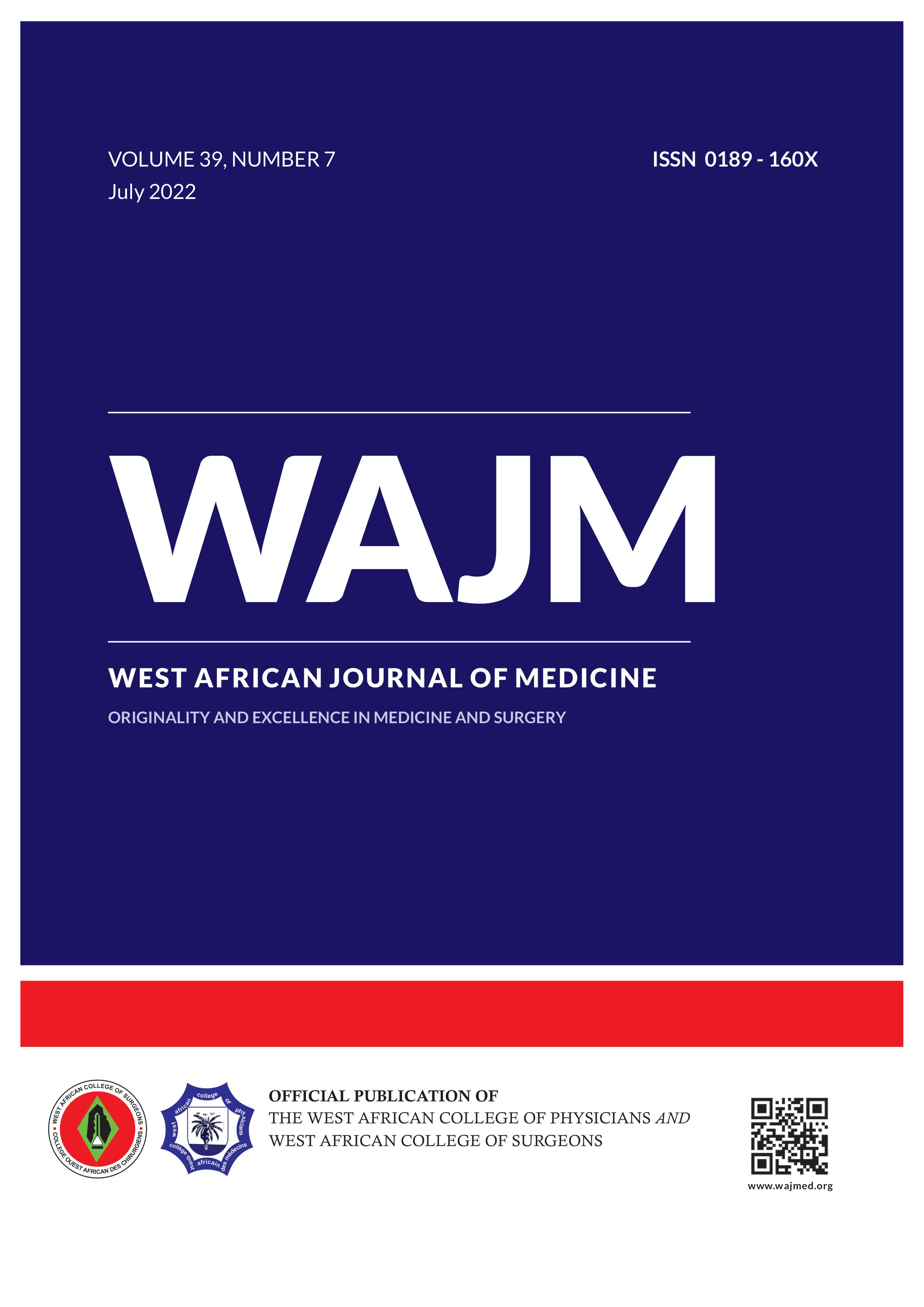ORIGINAL: A Retrospective Study on Changing Trends of Acquired Immunodeficiency Syndrome related Kaposi's Sarcoma in North-Western Nigeria
West Afr J Med . 2022 Jul 31;39(7):663-669.
Keywords:
AIDS; HAART; Kaposi’s sarcoma; Prevalence.Abstract
Abstract in English, FrenchBackground: The prevalence of AIDS-related Kaposi's sarcoma (KS) has been reducing following the widespread use of highly-active anti-retroviral therapy (HAART). In Nigeria, recent trends in the prevalence of KS in HIV-infected patients has not been described. We determined the prevalence, clinical pattern and treatment outcome of AIDS-related KS in Zaria, Nigeria.
Methods: Over a 5-year period, a retrospective study was conducted at the HIV treatment and care centre of Ahmadu Bello University Teaching Hospital, Zaria and all patients with histologically confirmed AIDS-related KS were included.
Results: A total of 4721 patients were enrolled during the period under review, out of which 45 were diagnosed with AIDS related KS, which constituted 0.95% of all patient seen. The male to female ratio was 1:1.5 with a mean age of 35.2 ± 6.5 years. Twenty-six (58%) were on HAART, with median duration of 4 months (IQR: 1-31 months) between HAART commencement and KS diagnosis, while KS was reported as presenting illness in 19 (42%) patients. The lower extremity was the most frequently involved site in 24 (53.3%) patients and disseminated disease was present in 14 (31.1%) patients, commoner in the HAART-naïve group. Following KS treatment, 27 (60%) patients recovered fully, 12 (26.7%) died, while 6 (13.3%) were lost to follow up. Disseminated disease, male gender, and low CD4+ T-cell count was associated with higher mortality.
Conclusion: Kaposi's sarcoma remains an important AIDS defining illness though with a decreasing prevalence. Early diagnosis and treatment should be prioritized at the time of HAART initiation in HIV service delivery programs in Nigeria.
Keywords: AIDS; HAART; Kaposi’s sarcoma; Prevalence.


